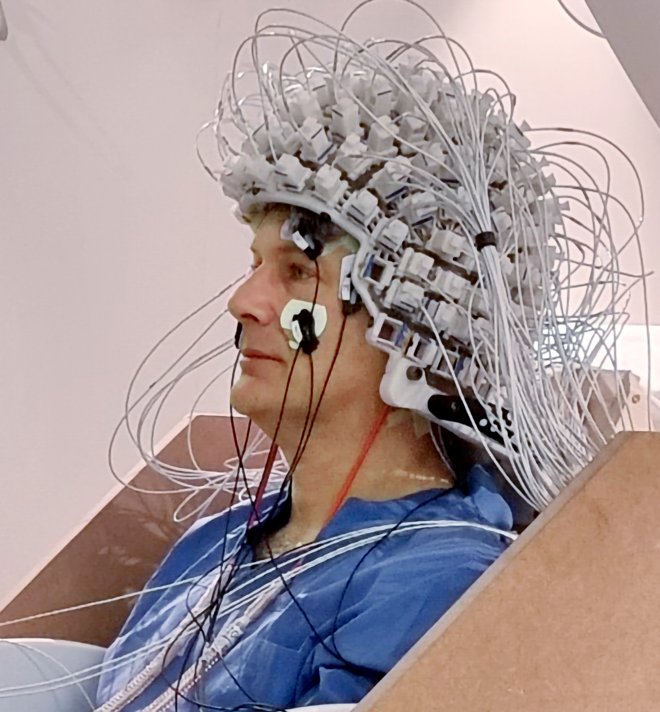KI’s new super machine measures brain activity in real-time – “A very expensive hairdo”
Daniel Lundqvist, Director of the Centre for Imaging Research at the Karolinska Institute, was one of the first to try the new system that was installed just after the turn of the year and is now in full test mode. He posted a picture of the event on LinkedIn.
It sort of looks like you’re at the hairdresser’s or, alternatively, have been transformed into some 18th century wig-wearing French nobleman...?
“Well, it does look rather silly, I’ll give you that, but if so, it would be a very expensive hairdo.”
This is actually the latest generation of magnetoencephalography (MEG), a method that records the exceptionally small magnetic fields produced when brain cells are activated. This allows monitoring how, when and where the brain is activated at the level of thousandths of a second and to follow how different areas of the brain interact and co-operate.
Natmeg in Solna is the only lab in Sweden with access to this technology, and they have been using the method for about ten years. However, the new, updated equipment – purchased with a grant from the Swedish Research Council of just over SEK 8 million – is exceptional in several respects.
Firstly, it uses a new technology called optically pumped magnetometers. Unlike conventional MEG systems whose sensors need to be cooled in liquid helium (at minus 269 degrees centigrade), it can be used at room temperature and can, therefore, be placed “on-scalp” – directly onto the head without insulation.
“In other words, it’s a helmet made up of many individual sensors, each of which can be placed as close to the brain as possible to take measurements. The method is absolutely silent and non-invasive – like a stethoscope to the head,” says Daniel Lundqvist.
Another factor that makes the equipment virtually unique is the number of sensors: 128. Other labs worldwide that use on-scalp technology typically use 10-50 sensors. As a result, the Solna lab’s equipment is exceptionally sensitive and provides extremely high detail resolution.
Is this research, or is it diagnostics?
“This particular piece of equipment is at a super early stage, very much at the cutting edge. However, we have carried out research studies with predecessors to this system, focusing on planning surgical procedures for patients with epilepsy. This involves detecting the part of the brain where epileptic activity is initiated, and this is one of the areas of greatest potential for MEG.”
The method will hopefully also find use in other clinical neuroscience applications to analyse brain activity patterns, for example, in Alzheimer’s or Parkinson’s or in research into how cognitive processes are represented in terms of brain activity.
Artikeln är en del av vårt tema om News in English.

 Av
Av 